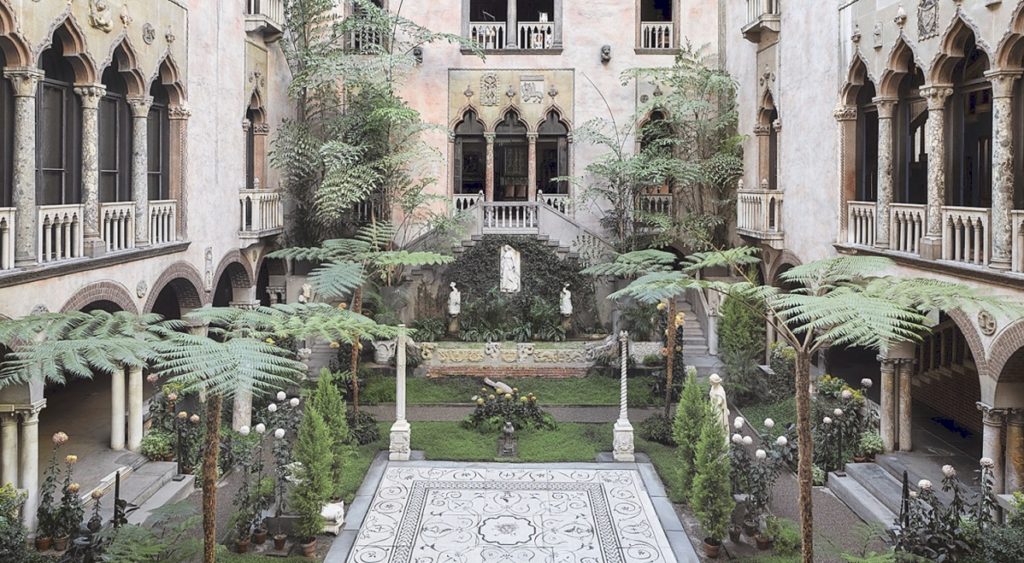
Bob Ward is a Boston 25 News reporter, widely regarded as one of the best crime reporters in New England. His reporting at WFXT has spanned more than two decades – everything from local investigations to federal probes – covering hundreds of high-profile cases and becoming known for getting officials, alleged criminals and witnesses to go “on record.” That news-sleuthing expertise will be on full view at the Bruce Museum in Greenwich, Conn., on Thursday, June 2, at 7 pm EST, as the museum hosts a webinar about one of the juiciest art crime cases ever – the 1990 heist of 13 priceless works of art from the Isabella Stewart Gardner Museum in Boston. We sat down with Ward to discuss his participation in the upcoming webinar, “The Caper That Stunned the Art World: The Gardner Museum Heist, 30 Years Later.”
For those who haven’t followed every tantalizing twist and turn of this unsolved case, can you tell us a bit about what is thought to have occurred on March 18, 1990?
Early in the morning of March 18, 1990, as the city of Boston was settling down after a full day of St Patrick’s Day celebrations, two men disguised as police officers bluffed their way into the Isabella Stewart Gardner Museum. Once inside, they subdued both security guards on duty and tied them up in the museum’s basement. For the next 81 minutes the thieves helped themselves to 13 works of art. Some of the pieces were cut from their frames. The thieves grabbed the museum’s security tape, but the museum’s motion detectors indicate that the thieves left the museum at 2:45 am. Despite an extensive worldwide FBI investigation and a $10 million reward, none of the Gardner Museum’s stolen artwork has been retrieved.
But there’s an important new lead that may be the key to finally cracking the case?
The new lead involves an unsolved murder in the city of Lynn, Mass., in 1991. The victim, Jimmy Marks, was shot to death, execution style, on the steps of his apartment building. Police determined that Marks was not robbed; his wallet was not taken, nothing was stolen from his unit. The Marks murder remains unsolved. However, decades later, Gardner Museum Security Chief Anthony Amore was told that Marks, in the months before his murder, was bragging to people that he was either in possession of the stolen Gardner art, or had access to it. As Amore investigated the lead with homicide detectives, it was revealed that Marks was a friend of Robert Guarante, an underworld figure long suspected to have been tied to the Gardner heist. Guarante’s widow later told Amore that when she learned that Jimmy Marks was murdered, he confessed to her that he killed Jimmy himself. The FBI has searched Marks’ Lynn apartment and is currently seeking people who knew Jimmy in an effort to find the artwork. It is thought that Jimmy may have been murdered because he knew too much about the Gardner heist.
Why do you believe that authorities have been unable to get a breakthrough after three decades of exploring myriad leads, clues and theories?
The biggest problem today is the passage of time. Many of the people thought to have been involved in the Gardner heist are now dead. If the Marks murder was connected to the Gardner heist, his would be the first of several murders of people who may have had intimate knowledge of the theft. That’s a powerful signal to others to keep quiet. Since none of the artwork has been recovered, it’s possible it is all still gathered together in one place. Perhaps the artwork is stored somewhere, and the only people who know the location are either dead, or too afraid to step forward.
How do you, museum experts or investigators account for the eclectic nature of the heist? Some paintings were clearly valuable, but left behind were other valuable works by Raphael, Botticelli and Michelangelo, for example.
That’s one of the big mysteries of the case. Was the Gardner heist a product of a shadowy art collector who gave the thieves a shopping list of what to steal that night? Were the thieves a gang of bungling amateurs who didn’t know what they were taking? The thieves had the run of the Gardner Museum for almost an hour and a half. The score, as big as it was, could have been infinitely bigger. It is thought that the lesser stolen pieces, like the Napoleonic eagle finial and possibly the Degas sketches, were taken because they attracted the eye of one or more of the thieves. Until the art is recovered and we know more about the theft, the reason why some pieces were stolen while other, more valuable art was left behind, is speculation.
Is the museum’s offer of a $10 million reward for information leading to the art’s recovery still in effect?
Yes, there is a $10 million reward still offered. There is also a separate $100,000 for the recovery of the Napoleonic eagle finial.

This theft is said to have occurred at a time when the museum was financially strained and lacked the kind of security systems that are in place today. What do your sources tell you about whether such an audacious theft could occur today?
I think that anything is possible and that determined thieves can always find ingenious ways to pull off a major heist. Today, in this high-tech digital age of cloud security, a large-scale Gardner-styled heist would be much more difficult to accomplish. The Gardner heist was “old school.” The thieves, using disguises, bluster and brute force, employed an armored car heist mentality when they hit the Gardner. Once inside, and once the guards were tied up in the basement, they only had to destroy video security tapes behind the watch desk to hide their tracks. Today, surveillance images inside a museum would be sent, encrypted, to a digital cloud, far away from the clutches of a greedy band of gangsters. It is also unlikely that anyone could bluff their way inside an art museum after hours. Today, the Gardner Museum is protected by a multilayer security system that would be incredibly difficult to defeat.
Your storytelling combined with some extensive law enforcement contacts led to the creation of your Boston 25 series, New England’s Unsolved, which gives victims and their families a voice. What’s the first case that gave genesis to that feature?
One of the first cases I featured on New England’s Unsolved is a very personal one. In 1978, the body of a teenager from Bellingham, Mass., was found murdered on the side of Route 495. The victim was Theresa Corley. She was 19 years old. I worked with her at a supermarket in my hometown of nearby Franklin, Mass. Theresa was very well liked, hard working and friendly. Theresa’s case remains unsolved, but my stories on her case have uncovered much new information and her family, even after all this time, remains hopeful that the truth will become known.
–W.A. Demers
[Editor’s note: The webinar is produced by the Bruce Museum, as a part of its “Bruce Presents: Thought Leaders in Art and Science” speaker series. Join this online, live-streamed Zoom webinar, by visiting www.brucemuseum.org and click on the Reservations button to sign up. Tickets are free for Bruce Museum Members; $20 for nonmembers. In addition, an episode of New England’s Unsolved featuring the Gardner Heist can be seen here: https://www.boston25news.com/specials/new-englands-unsolved-gardner-heist-30-years-later/L5XV74U2QBO6JCFBKVMEGAUH7A/]




